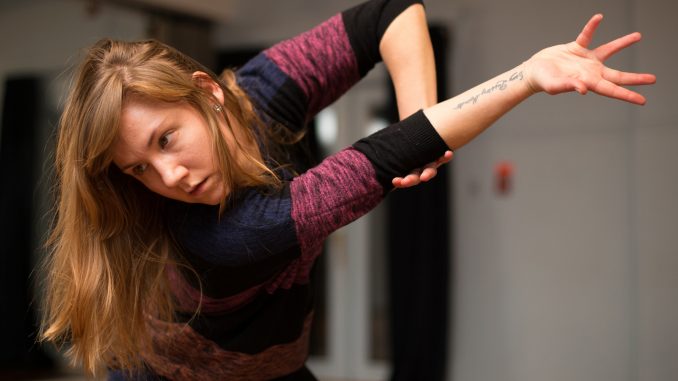
Caroline O’Brien feels a strange connection to the homeless individuals who often sit just outside the dance studio she cleans each week in exchange for a place to rehearse. Her struggle to maintain a rehearsal space as a dancer helps her relate to those deprived of a space to call home.
“I can’t afford space to rehearse, like I don’t have the funds or the capacity to do that, to follow through with my art and what I want to do in life,” said O’Brien, a professional dancer who studied dance at Temple from 2005 to 2007.
O’Brien realized there must be even more similarities between the homeless and non-homeless, she said.
“I’m going out of my way and doing what I need to do to find happiness in life,” O’Brien said. “And what did this person do? Where are they from? What passions did they have?”
O’Brien said she realized all people—homeless or not—experience loneliness, so she decided to organize a production of performance art to explore loneliness through dance, music and spoken-word poetry.
The production, “SOLOnely Together,” consists of solo performances by professional artists and patrons of the Trenton Area Soup Kitchen’s performing arts program, the Share Project. The show will take place Jan. 15 at 7:30 p.m. at Headlong Studios on 1170 S. Broad St. Entry to the show is a suggested $15 donation to the Trenton Area Soup Kitchen, abbreviated as TASK. Additional donations of school supplies, canned goods and clothing will also be accepted.
O’Brien’s inspiration for the production, she said, came from experiencing a “weird plateau” in her “dance life” this past year.
“I just don’t really know what else I want to do, like I could perform and I can choreograph, but there has to be something more that I can do with this art,” O’Brien said.
That “something more” was inviting members of TASK’s program, the Share Project, to inspire her audience with poetic accounts of their personal experiences with loneliness.
Jaime Parker, the Share Project Coordinator at TASK, said performance art provides patrons with “a little bit of peace in an otherwise chaotic life.”
The goal of TASK’s performing arts program, Parker said, is to build the self-esteem of patrons, who are all currently homeless, formerly homeless or from low-income homes.
Through the Share Project, patrons participate in musical “jam sessions,” hone their creative writing skills and practice performing their own spoken-word poetry.
Parker said about 10 patrons from the Share Project will perform spoken-word poetry. Parker can only estimate the number of performers, she said, because the patrons of TASK have “a lot of variables in their lives.”
“If the weather’s bad and they’ve got to walk two miles in the pouring rain, it’s less likely they’ll be able to come,” she said.
The difficulties of being low-income or homeless also make it harder to combat loneliness, Parker said.
“If you don’t have a car, sometimes it’s very difficult to travel to meet up with people who may share a hobby,” she said. “If you want to try a new hobby, but it requires you to purchase equipment, you may not be able to.”
“Loneliness is something that affects every person, but it’s interesting to see how being low-income and lonely may have a slightly different flavor,” Parker added.
O’Brien has also commissioned professional artists to share interpretations of loneliness from a non-homeless perspective.
Marcie Mamura, an adjunct assistant professor of dance at Drexel University, has prepared a modern and jazz fusion routine that evokes a sense of loneliness inspired by “city life,” which she describes as “feeling a part of something, but also feeling lonely surrounded in a large space.”
“One of the things that I’m playing with is the idea of loneliness and togetherness in relationship to space,” Mamura said. “I’m trying to intentionally limit the amount of physical space that I take up and see how that translates.
The relationship of the artist to space, O’Brien said, is something that will affect all performers, because the audience will be seated in a circle surrounding the soloist on all sides.
“It’s really going to feel like this enclosing feeling of loneliness for the dancers and the other artists,” she said.
O’Brien said from her experience, it’s not common for art and community to come together this way in such an “intimate setting.”
“We all experience the same things in life just different styles, different times,” O’Brien said. “I think we need to remember that, because it’s so easy to kind of pity somebody, but yet you’re experiencing the same thing.”
Jennifer Roberts can be reached at jennifer.roberts@temple.edu


Be the first to comment